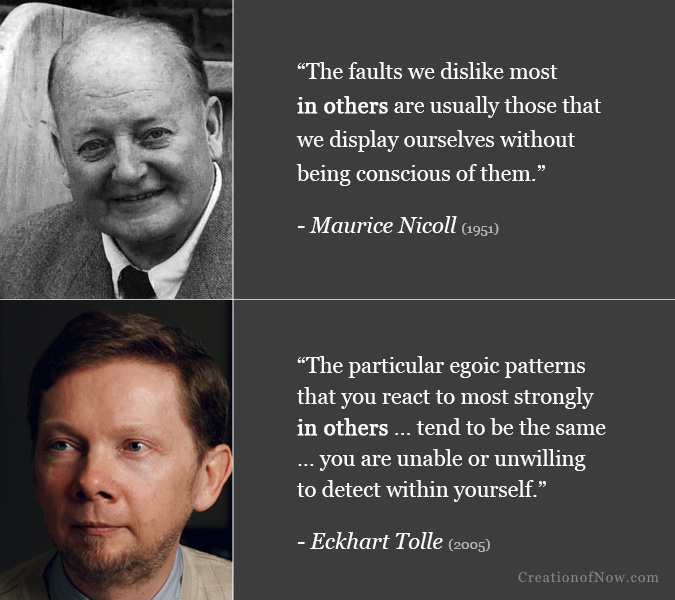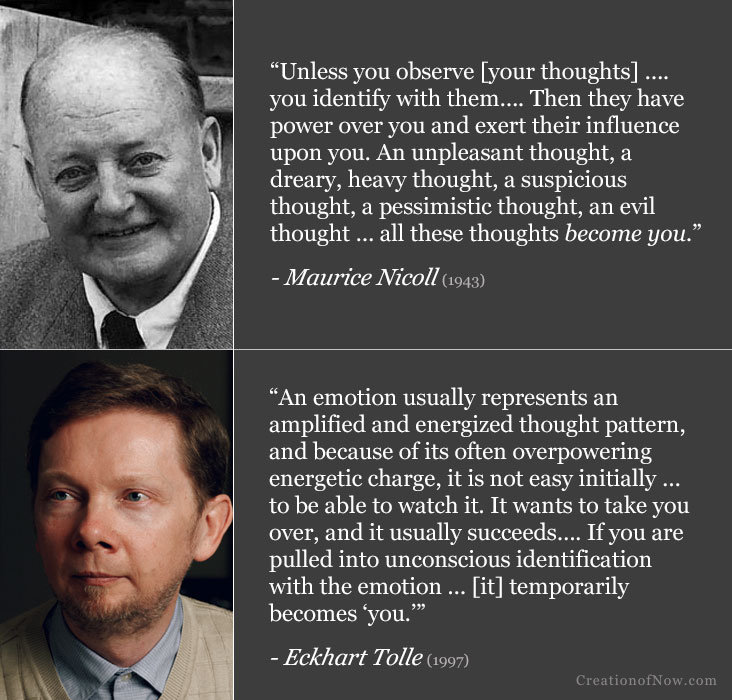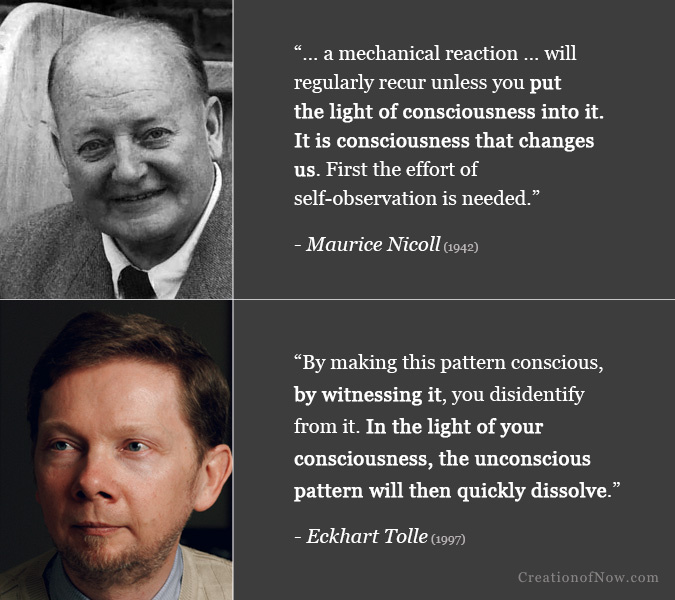All images on this site comparing similar statements by Eckhart Tolle and Maurice Nicoll on the topic of identification are gathered here. Cycle through them using the forward and back arrows at the top. The captions below provide a link to the article they’re found in. To browse quotes in other categories, use the links at the bottom of the page.

They reiterate the idea that the faults we dislike most in others may exist unrecognized in us.
Read the article this image was featured in here.

Nicoll and Tolle describe how thoughts and emotions can “become you” through a process called identification.
Read the article this image was featured in here.

Compulsive thoughts are similarly described as old “gramophone records” playing in one’s head that sound like the monologues of people “muttering to themselves” in the street, only not expressed outwardly. This negative thinking is said to drain energy, according to Nicoll and Tolle, and they encourage readers to observe it in order to stop identifying with it.
Read the article this image was featured in here.

By becoming identified with emotional reactions to life, people “become” their reactions, they explain.
Read the article this image was featured in here.

Nicoll and Tolle often describe the transformative effects “the light of consciousness” has on unconscious reactions/patterns. This “light” must be directed within via self-observation.
Read the article this image was featured in here.

Nicoll and Tolle both emphasize a distinction between the external events of life and a person’s internal reaction to that event.
Read the article this image was featured in here.

Using the example of bad weather, both authors explain how people fail to distinguish between external situations (which are neutral / impersonal) and the subjective internal reactions to those situations.
Read the article this image was featured in here.

People identify more with their personality/psychological form and neglect essence, they say.
Read the article this image was featured in here.

To release oneself or withdraw—psychologically—from one’s identification with the false self is a great relief, the authors suggest.
Read the article this image was featured in here.

The false self/personality acts as a psychological substitute for our true or essential self, the authors say.
Read the article this image was featured in here.
Identification | Psychological Projection
The False Self | Essence and Personality
The Now | Eckhart Tolle & Barry Long
The Time/Pain Body & Emotional Centre/Body
View main quote image categories:
Self-Observation | Spiritual Psychology
Negativity Within | Law of Opposites
